Small Group Experiential Travel
Tour Code
PQ11
Start
Lima (LIM)
End
Guayaquil (GYE)
Tour type
Cultural
Max Group Size
18
When To Go
May, Sep
Activity Level
2 - Moderate
Overnight in
La Paz, Copacabana, Guayaquil, Quito, Cuenca, Riobamba, Ibarra, Banos, Lima, Cusco, Ica, Puno, Nazca, Yucay, Aguas Calientes, Ecuadorian Amazon, Lasso
- Overview
- Info & Inclusions
- Itinerary
- Map & Hotels
- Photos
- Dates & Prices
Highlights
- Guided Amazon adventure
- Famed 'Avenue of Volcanoes'
- Mysterious Machu Picchu - a must see!
- Scenic 'Vistadome' train
- The Floating Islands of Puno
- Sacred island of the Sun
Description
Peru's capital city was once called 'The City of Kings' by Spanish conquistadors and it is here that we begin our 28-day Peru, Bolivia & Ecuador Tour through South America.
Using Lima as a base, we catch a flight to view the curious phenomenon of the Nazca lines; approximately three hundred figures made of straight lines and geometric shapes that are most clearly visible from the air, which were supposedly built by the ancient civilization of the Nazca, but to what end, no one can say with certainty.
Most tours to the Nazca lines include a trip to Peru's answer to the Galapagos Islands - the spectacular Ballestas Islands - and then it's back to Lima for further exploration of the destination that was once the most important and richest city in the Americas.
We meander in grand plazas, gaze at intricately carved churches and cathedrals and tour breathtaking underground catacombs as we learn about the area's fascinating colonial history.
Travelling southeast through spellbinding landscapes of deep, forested valleys and towering mist-encircled mountains, we drive to Machu Picchu for one of the highlights of our adventure: exploration of the majestic temples, gigantic pyramids and stone staircases built by the great Inca Empire of ancient times.
Through mud-brick villages wherein locals are adorned in traditional attire and green fields dotted with willow trees and eucalyptus groves, we journey east to Bolivia, stopping off en route for a short boat ride on a lake to see the unique lifestyles of islanders.
For five days, we admire the abundant natural and man-made attractions of Bolivia: the fascinating colonial centres of Copacabana; the tranquility of Lake Titicaca and the lakeside trenches built by the Incas to channel the sacred water; museums brimming with pre-Columbian artifacts and relics; ancient ceremonial sites of 'lost' civilizations; colourful marketplaces; and glorious sceneries of Andean snow-tipped peaks and plunging valleys with tropical jungle.
From here, it's on to the pristine Amazonian rainforests of Ecuador to see teeming wildlife and lush flora as we tour the country's remarkable natural environment.
As we make our way along the 'Avenue of Volcanoes', we see snow-capped summits, mystical brooks and rivers, terraced farmlands, small villages and fascinating cultures and reluctantly fly home from the capital, Quito.
Using Lima as a base, we catch a flight to view the curious phenomenon of the Nazca lines; approximately three hundred figures made of straight lines and geometric shapes that are most clearly visible from the air, which were supposedly built by the ancient civilization of the Nazca, but to what end, no one can say with certainty.
Most tours to the Nazca lines include a trip to Peru's answer to the Galapagos Islands - the spectacular Ballestas Islands - and then it's back to Lima for further exploration of the destination that was once the most important and richest city in the Americas.
We meander in grand plazas, gaze at intricately carved churches and cathedrals and tour breathtaking underground catacombs as we learn about the area's fascinating colonial history.
Travelling southeast through spellbinding landscapes of deep, forested valleys and towering mist-encircled mountains, we drive to Machu Picchu for one of the highlights of our adventure: exploration of the majestic temples, gigantic pyramids and stone staircases built by the great Inca Empire of ancient times.
Through mud-brick villages wherein locals are adorned in traditional attire and green fields dotted with willow trees and eucalyptus groves, we journey east to Bolivia, stopping off en route for a short boat ride on a lake to see the unique lifestyles of islanders.
For five days, we admire the abundant natural and man-made attractions of Bolivia: the fascinating colonial centres of Copacabana; the tranquility of Lake Titicaca and the lakeside trenches built by the Incas to channel the sacred water; museums brimming with pre-Columbian artifacts and relics; ancient ceremonial sites of 'lost' civilizations; colourful marketplaces; and glorious sceneries of Andean snow-tipped peaks and plunging valleys with tropical jungle.
From here, it's on to the pristine Amazonian rainforests of Ecuador to see teeming wildlife and lush flora as we tour the country's remarkable natural environment.
As we make our way along the 'Avenue of Volcanoes', we see snow-capped summits, mystical brooks and rivers, terraced farmlands, small villages and fascinating cultures and reluctantly fly home from the capital, Quito.
Price Includes
- Breakfast and dinner daily (hotels and restaurants). All sightseeing and entrance fees for sites noted as 'visited' in the detailed itinerary. Gratuities for local guides, drivers, restaurant staff, porters. Airport transfers for land & air customers arriving/departing on tour dates.
Exclusions
- International airfare to/from the tour. Tour Leader gratuity, some lunches (see tour itinerary), drinks, personal items (phone, laundry, etc), domestic and international air taxes (if applicable). Airport transfers for Land Only customers. Optional trip cancellation insurance.
- Our post-reservation trip notes offer further guidance on optional meal costs, shopping, useful items to bring, recommended reading etc.
Trip Info
- Seasonality and Weather:
Mainland: The cool and dry season runs from May to October. Outside this time you will encounter warmer and perhaps rainy/misty conditions in the highlands but serious heat/humidity are only a consideration in the Amazon. - Transport and Travel Conditions:
Land transport throughout by private air-conditioned motor coach, 24-36 seats depending on ultimate group size (see 'group size'). Though we will have some full bus days, road travel is not particularly arduous as there are plenty of stops of interest. Roads are in good condition though winding on some stretches. Scenic VISTADOME train between Aguas Calientes and Cuzco; internal flights via scheduled local carrier.
Baggage handling service is usually available though you should be independent with your luggage, especially at airports.
Our difficulty rating of "Level 2" reflects the generally ambitious nature of our program, which features full days of travel and sightseeing, plenty of walking at sites that may be quite large and feature uneven/cobbled surfaces, stairs, heat, and some remote locations. You must also be prepared for short walks to dinner when we dine outside hotels, and to be fully-independent with your luggage in the event that porters are not available. While we don’t include any strenuous activities such as extended hiking or cycling, you must be steady on your feet and able to fully manage yourself and your belongings. And as always on any of our tours, if you rely heavily on a cane or any other mobility device, this tour would not be suitable for you.
Though most people are not seriously affected by altitude on this trip (3000m/10,000 ft +), we require that all participants submit a “Self-Assessment” form confirming their suitability for this journey. And, of course, you should consult with your physician should you have any pre-existing conditions that might be affected by travel to high elevations. We suggest that you preview our form, which includes more detail regarding what you can expect on tour, by clicking the “Resources” tab at the top of this page.
Am I suitable for this tour? Please refer to our self-assessment form - Accommodation:
Well-located, heated/air-conditioned, mid-range (3-star) hotels with en suite toilet and bath throughout. The Amazon lodge is a little more rustic, but still very nicely appointed.
For more details about our preferred accommodation, please click on the “Map & Hotels” tab above - Activity Level: 2
These are particularly busy tours that feature a lot of moving around, sometimes by train and short journeys on local transport. Walking tours of towns and cities are leisurely but you should be prepared to be on your feet for several hours. Some of our cultural trips that occur at high altitude and/or require greater independence with baggage handling (at hotels, airports, train stations) also fall into this category.
To learn more about the Activity levels, please visit our tour styles page. - Staff and Support:
Tour Leader throughout, local driver/s, local guides at several locations. - Group Size:
Maximum 18 plus Tour Leader
Download Itinerary
- Day 1:Arrive in LimaToday we arrive in Lima, Peru.
In recent years, this city has undergone some wonderful restorations of the plazas, ornate facades, and wooden balconies for which it is famous. Named the 'City of Kings' by the Spanish Conquistadors, Lima is the capital of Peru. Founded in 1535 by Francisco Pizarro, where the River Rimac meets the Pacific Ocean, this was the most important Spanish city during the colonial era with a population of about 100,000 inhabitants. Today the city is home to more than 7 million people.
NOTE: As most flights into Lima arrive close to midnight, we suggest that you consider adding an extra night in order to rest up. The hotel is comfortable and well-located, and our start time on Day 2 is likely an early one.
Overnight in Lima (Miraflores).
Included Meal(s): Dinner - Day 2:Lima - Paracas & Nazca Lines Scenic OverflightWe have an early morning private transfer to the bus station for the PUBLIC BUS to Paracas (4-5 hrs). On arrival transfer from the station to our hotel in Paracas. After a brief break for refreshment, we will head directly to the Pisco Airport to board your scenic overflight of the 2,000 year old Nazca Lines, comprised of about three hundred figures made of straight lines and geometric shapes most clearly visible from the air.
The lines were supposedly built by an ancient civilization called the Nazca, though no one knows for sure who built them or why. Since their discovery, the Nazca Lines have inspired fantastic explanations from ancient gods, a landing strip for returning aliens, a celestial calendar, used for rituals probably related to astronomy, or a map of underground water supplies. Your total flying time will be about one hour; the total time spent over the lines themselves will be approximately 25-35 minutes.
After the flight we drive back to our hotel in Paracas for dinner and overnight.
Included Meal(s): Breakfast and Dinner - Day 3:Ica Regional Museum, Winery & Huacachina LagoonAfter breakfast, we visit the Regional Museum of Ica "Adolfo Bermúdez Jenkins," a significant cultural institution in Peru. This archaeology and anthropology museum offers a deep dive into the rich history and culture of the region, primarily dedicated to the Paracas culture, an Andean society known for its intricate textiles and complex societal structures. The museum has dedicated exhibition rooms showcasing artifacts and information about this culture, providing visitors with a unique opportunity to learn about this ancient civilization.
We then visit one of the traditional wineries of Ica, which can lay claim not only to the lion’s share of Peruvian production, but also to some of the oldest and longest established wineries in the New World (500+ years). Most of the vineyards in Ica are planted on the flatlands, hugging the riverbanks and irrigation channels — access to water is vital in this arid desert. The dry, sunny climate and free-draining sandy soils with their ample water supply allowed viticulture to thrive and you’ll still find many hundred-year-old vines in a perfectly healthy condition.
Later we drive to the village of Huacachina, built around a small lake in the desert. Called the "Oasis of America," it serves as a resort for local families from the nearby city of Ica. Legend holds that the lagoon was created when a beautiful native princess was apprehended at her bath by a young hunter. She fled, leaving the pool of water in which she had been bathing to become a lagoon.
Return to Paracas for dinner and overnight.
Included Meal(s): Breakfast and Dinner - Day 4:Paracas - Ballestas Islands - LimaThis morning we enjoy a (shared) boat trip to the spectacular Ballestas Islands, often described as Peru's answer to the Galapagos. Though they don't quite match the splendour of their Ecuadorian cousins, they are quite spectacular in their own right. The islands have been eroded to form countless natural caves and arches. In fact, this is where the islands' name comes from -- the word Ballesta means 'bow' (as in archery). There are colonies of thousands of seabirds such as pelicans, Inca terns and cormorants as well as a small colony of Humboldt penguins. You will also see hundreds of sealions and often schools of dolphin.
We return to Paracas and the take the bus north, arriving back in Lima late afternoon. Tonight we meet other incoming group members who are not participating in the Nazca extension.
Overnight in Lima (Miraflores).
Included Meal(s): Breakfast and Dinner - Day 5:Lima: City TourThis morning we will make our way to the Plaza de Armas, the most important plaza in Lima. The oldest surviving part of the plaza is the impressive bronze fountain, erected in 1650. Surrounding the plaza is the exquisite Archbishop's Palace, the cathedral, and the Government Palace where handsomely uniformed presidential guards are on duty all day. We visit the cathedral where the great conquistador Francisco Pizarro's tomb lies. After, we will continue to San Francisco's Church to visit the extensive catacombs that lie underneath, before then stopping for some lunch at Ficus Hacienda. Here we will also get to enjoy a wonderful exhibition of beautiful Peruvian Paso horses.
We then proceed to the Larco Museum, which showcases remarkable chronological galleries and an excellent overview on 3,000 years of development of Peruvian pre-Columbian history. Located in a unique vice-royal mansion of the 18th century built over a 7th century pre-Columbian pyramid, is surrounded by beautiful gardens. Features the finest gold and silver collection from ancient Peru and the famous erotic archaeological collection, one of the most visited Peruvian tourist attractions. For an unforgettable experience, Larco is one of the few museums in the world where visitors can also choose to enter the storage area with its 45,000 classified archaeological objects.
Later we head to the trendy area of Miraflores where people stroll along the cliff tops and watch the sun setting on the Pacific Ocean. The best location is the new "Love Park," with its magnificent monument to lovers at its centre.
Dinner will be on your own this evening.
Overnight in Lima.
Included Meal(s): Breakfast and Lunch - Day 6:Lima - Fly to Cuzco - Urubamba Valley - Ollantaytambo - YucayEarly this morning we fly to Cuzco, located in a fertile valley at 3354 m (11,004 feet). This is the archaeological capital of the Americas and the ancient capital of the Inca Empire that, at its height, stretched from Colombia in the north, through Ecuador, Peru and Bolivia, and down to central Chile in the south. Although the empire already existed in the 12th century, it remained small until the mid-15th century. Over the next 100 years, it expanded massively but declined due to the civil war and the conquest by the Spanish conquistadors under Francisco Pizarro in 1533.
On arrival we will travel by road into the Urubamba Valley, or "Sacred Valley of the Incas," along one of the most scenic drives on our trip, to the Inca ruins of Ollantaytambo located on a spectacular ridge with deep valleys on either side. We can admire the carefully constructed and maintained farming terraces on the surrounding hillsides.
We continue to the town of Yucay on the bank of the Urubamba River (2300m / 7,590 ft). This is an attractive little town of particularly fertile lands whose name translated into Spanish means "deceit" or "bewitchment". According to legend, in the middle of the 15th century, the Inca Huayna Capac was captivated by the incomparable magnificence of Yucay's setting and decided to settle here.
Overnight in Yucay.
Included Meal(s): Breakfast and Dinner - Day 7:Yucay - Machu Picchu AreaToday we take the early morning train* from Urubamba to Aguas Calientes and Machu Picchu. The train journey to Machu Picchu is a highlight of any trip to the Andes; the scenery is simply spectacular, and the train allows you to enjoy it in comfort. The +/- 3 hour trip takes us through a changing landscape with wonderful vistas of the mountains and, deep in its dramatic canyon, the beautiful Urubamba River. Our early arrival from Urubamba ensures that we are at the site before the tourist throngs arrive on the train from Cuzco later in the morning.
Machu Picchu, popularly known as the 'Lost City of the Incas,' is an ancient city of stone palaces, towers, temples and staircases. It is a very mysterious place, and to this day our knowledge of it remains sketchy. There are no records or artifacts on the site to indicate what any of the buildings were used for. Archaeologists have ascertained that the site was most likely a ceremonial centre and possibly used for administrative purposes for the populous region.
Upon arrival at the Aguas Calientes train station, a bus will take us on the 6 km (4 mile) twisting journey up the mountainside to the site of Machu Picchu. Having already dropped our baggage at our hotel, we proceed immediately for a 2-hour guided walking tour of Circuit 1 (the Upper Terrace route). After a break for lunch, we will then continue with another 2-hour guided walking tour, although this time we will be following Circuit 2B. During these guided tours, we will see, among other features: the Intihuatana pyramid, the Water mirrors complex, the Plaza of the Sacred Rock, and the prison-like Temple of the Condor.
After our tours we will proceed back to our hotel.
* PLEASE bring an overnight bag for this one night at Aguas Calientes as the train enforces strict luggage limits. Our larger bags will be transported back to Cuzco for us. Please also note that, due to group size limits, groups exceeding 15 participants will be split between two guides for today's site tour.
Overnight at Agua Calientes (near Machu Picchu).
Included Meal(s): Breakfast and Dinner - Day 8:Machu Picchu Area - CuzcoA large part of the beauty of Machu Picchu is created by its setting on a mountain top surrounded by deep valleys. By staying for a second day to visit Machu Picchu, rather than visiting as a day trip from Cuzco, we are able to savour the atmosphere of this very special place.
In the early morning of our second day at Machu Picchu, some group members may choose to take the bus back up to the site with the weather-dependent hope of seeing the mist-clad mountains greet the morning sun (an optional excursion). Weather notwithstanding, the best thing about going up the second day is being there early when there are fewer people, allowing time to "soak it in," as well as the opportunity to climb Huayna Picchu.
During our time in the village below the site, we will also include a visit to the Manuel Chavez Ballon Site Museum, which focuses on the "discovery," excavation, and history of Macchu Picchu. On display are historical photos, including photos of Hiram Bingham at Machu Picchu shortly after he came across the ruins, informative write-ups on the construction of Machu Picchu and the life of the Incas, and artifacts found at the site. Outside the museum is a very lush botanical garden running along the river; some plants are labelled and there are a few short trails. This is a nice shady area to rest on a hot day and is an easy 25 minute walk from Aguas Calientes down the road leading to Machu Picchu.
Later in the afternoon we board the VISTADOME train from Aguas Calientes to Ollantaytambo Station (1.5 hours) from where we bus back to Cuzco.
* DUE TO strict limits on the number of visitors daily, if you elect to visit again today (optional - at your expense), you will need to book well advance online via www.ticketmachupicchu.com. You will need to choose the EARLIEST options for Machu Picchu only OR Machu Picchu & Huayna Picchu if you want to hike Huayna Picchu (a difficult walk).
Overnight in Cuzco.
Included Meal(s): Breakfast and Dinner - Day 9:Cuzco AreaThis morning we visit some of the most important Inca sites in the Cuzco area.
Sacsayhuaman is an impressive complex which, like so many others of that time, had both a religious and military purpose. The fortress known as the 'storehouse of the sun' incorporates some of the largest stones ever used in a building. The zig-zag walls represent the teeth of the sacred puma and provide an excellent defensive structure. The stones fit so perfectly together without mortar that not even moss can grow in the cracks!
In the afternoon we return to Cuzco and enjoy a tour of the town. We visit Coricancha, the temple of the sun which was the most important location in the Inca empire. Entombed in the closed cloister of the Sto Domingo Church, these sacred walls were hidden from modern civilization until the colonial walls were brought down in 1950 by a powerful earthquake. We also visit the church of San Blas with its fabulously carved pulpit. Wandering the narrow streets of the San Blas artisan region we make our way to the cathedral which towers impressively over the Plaza Mayor. Inside we find precious paintings from the Cuzco School of Art, one of the most prolific of its era.
This Inca city was laid out around a great central square in the shape of a puma, the god of lightning. Today, stone walls built by the Incas line most of Cuzco's central streets and form the foundations of colonial and modern buildings. The Inca buildings were so well built that the Spaniards simply knocked down the upper parts of the Inca temples and palaces and built their churches and mansions on top of the Inca walls. Shortly after the Spanish conquest, the capital was moved to Lima on the coast. Thus Cuzco has retained a wonderful, untouched colonial atmosphere. The culture is also very much alive here, and is evident in the music, clothing and handicrafts of the people.
We have dinner at a local restaurant where we can try some typical Peruvian dishes. One may wish to try the "Pisco sour", a powerful drink made with a Peruvian liquor distilled from white grapes.
Overnight in Cuzco.
Included Meal(s): Breakfast and Dinner - Day 10:Cuzco & PisacThis morning we visit the ruins at Tambo Machay, Puca Pucara and Qenko. The latter is an Inca sacrificial site carved with inscriptions.
We continue to Pisac with its lively market where you will encounter traditionally dressed locals with whom you can barter for colourful craft items. You will see many unique Andean musical instruments as well as dazzling textiles. Peruvian woolen items are justifiably famous for their imaginative designs, based on Inca art and the local flora and fauna. You can buy sweaters and caps made from the extremely warm wool of alpacas and llamas.
We return to Cuzco with balance of the day at leisure.
Overnight in Cuzco.
Included Meal(s): Breakfast and Dinner - Day 11:Cuzco - Pucara - Raqchi - Puno & Lake TiticacaToday we travel by road to Puno on the shores of Lake Titicaca (+/- 7 hours, with stops).
From Cuzco, we head south-east, through green fields dotted with willow trees and eucalyptus groves, passing outlying communities gathered around colonial churches that conceal their artistic treasures behind crumbling adobe facades. The first half of the journey is dominated by magnificent Andes followed by the gentler, rolling Andean Plains, where vicuna and alpaca are often seen. This is a wild, high, windswept and sunburned prairie of isolated communities of shepherds and cattle farmers, wedged between the two distant branches of the Andes visible occasionally on either horizon, when not melting completely with the giant cumulus clouds that dominate the skyline.
Along the way we visit Pucara (aka Pukara), where we visit the ruins of the Pucara culture and its museum, located at the breathtaking elevation of about 3900m (almost 13,000 feet). This town is known across Peru for the archaeological site of Pukara and a vibrant modern pottery-making tradition. The fort is made of large walls, terraces, and staircases and was part of defense of Cuzco in particular and the Inca Empire in general.
We then stop at Raqchi and the ruined Temple of Wiracocha, named for a deity believed to be the giver of all life; the temple was thought to be built to to appease him and honour him. The temple is said to be specifically built so that people had to walk in a zigzag motion, which is related to the relationship between Wiracocha and Inca cosmology.
Finally we will pay a visit to the district of Andahuaylillas with its Baroque church, known as the "Sistine Chapel of South America".
Puno, at 3830m (12,562 feet), is the main settlement on the Peruvian shore of Lake Titicaca and the highest place on our tour in which we will spend some time. Puno is the greatest centre of Peruvian folk dancing and traditional instruments; the markets and streets of Puno are bustling with the brightly-coloured costumes of the different groups of the region.
Overnight in Puno.
Included Meal(s): Breakfast and Dinner - Day 12:Lake Titicaca: Floating Islands & Taquile IslandWe will begin our day by visiting the floating islands of Los Uros. The Uros people began their floating existence centuries ago in an effort to isolate themselves from their rivals, the Collas and the Incas. Today, about 300 people live on the islands. The islands are constructed from many layers of floating tortora reeds which grow in the shallow waters of Lake Titicaca. The reeds rot away from the bottom and are replaced at the top, so the ground is soft and springy as you walk over it. Even the buildings on the islands are made of tortora. The whole life of the Uros people revolves around the reeds. They even eat the lower stalk and root, which is supposed to taste like celery.
Today the Uros live mainly from fishing, including catching the giant pejerray which can grow up to 13.5 kg / 30 lb.
Later today we will make our way to Taquile Island. Here we will have some time to explore and also have lunch in a local home.
Overnight in Puno.
Included Meal(s): Breakfast and Lunch - Day 13:Puno, Peru - Copacabana, BoliviaToday we travel round the Peruvian side of the lake and cross into Bolivian territory. The village of Chucuito is built over an Inca settlement and has an Inca sundial on display which was assembled in the mid-1800s using colonial, Inca, and modern era stones. The turbulent history of the lake region can be seen in the many Inca and pre-Inca sites as well as Spanish colonial churches dotted across the area.
We drive along the western shores of the lake taking in various small towns which are famous for their colonial churches and architecture. One of the most unusual towns along the lake is Juli, which has four huge churches and yet is a small town. The town was originally the Spanish capital of the lake region and the Spaniards hoped to convert most of the indigenous population to Catholicism. While building the Church of Santa Cruz the local stonemasons incorporated Inca motifs into the Christian decorations.
This afternoon we will enjoy a relaxed walking tour of Copacabana. For centuries, Copacabana has been a site of religious pilgrimage, beginning with the Incas. We visit the Cathedral of the Indian Virgin, built between 1605 and 1820. It is a brilliant Moorish structure with mudejar domes, colourful azulejos (decorative tiles), and a beautiful church courtyard decorated with wonderful flower gardens. Every year, hundreds of thousands of pilgrims travel from distinct parts of Bolivia and other Latin American countries to take part in religious festivals in Copacabana. Legend says that if the statue is removed Lake Titicaca will rise up and flood the whole Altiplano region.
For the energetic, there is a walk up to Cerro Calvario (Calvary Hill) for beautiful views of the town and lake. Pilgrims pass the 14 stations of the cross to reach the top but once there they encounter, as so often in Bolivia and Peru, a fusion of Catholic and pagan beliefs.
Overnight in Copacabana.
Included Meal(s): Breakfast and Dinner - Day 14:Lake TiticacaToday is spent exploring Isla del Sol in Lake Titicaca by boat. This is the most important of the thirty-six islands in the lake. Lake Titicaca, South America's largest lake, straddles the Bolivia-Peru border and is said to be the highest navigable body of water in the world at an altitude of 3810 m (12,497 ft). Lake Titicaca was once much larger than the 8560 sq kilometres (3,305 square mi) it occupies today. The great city of Tiahuanaco was built at the edge of the lake, but today it is more than 25 km (15 mi) from the lake. This reduction in the lake size has had a tremendous effect on the climate of the Altiplano region over the past 1,000 years and has made this cradle of cultures able to support far fewer people today.
The cleverly terraced slopes of Isla del Sol contain numerous ruins and small traditional villages. We see the Inca steps where water from a natural spring runs through three stone channels. The sacred water is supposed to cure ailments and bring long life. The three stone channels represent the three commandments of Inca life: Don't Lie, Don't Steal, and Don't be Lazy. The Inca society was highly organised and industrious; laziness was punishable by death.
Later today we return to Copacabana. You may like to take a stroll along the lake shore at sunset.
Dinner on your own this evening.
Overnight in Copacabana.
Included Meal(s): Breakfast and Lunch - Day 15:Copacabana - Tiahuanaco - La PazThis morning we drive towards La Paz. We take first a ferry across from the peninsula on which Copacabana sits to the Bolivian mainland and drive to La Paz, one of the world's highest major cities.
En route we stop at Tiahuanaco. This flat, desolate landscape would not seem capable of supporting life, and yet this is where the majority of Bolivia's population live. Here we may see llamas and alpacas, the only surviving relatives of the camel found in the Americas. Tiahuanaco is an ancient ceremonial site constructed around AD 700. After about AD 1200 the Tiahuanaco people disappeared, becoming another 'lost' civilisation. We know little about the people of Tiahuanaco but it is believed that their civilisation developed over a period of 2,000 years and then mysteriously vanished.
Our destination is La Paz, located at 3686 m (12,090 ft) above sea level. La Paz is situated in a bowl-shaped canyon in the Cordillera Real (Royal Range) of the Andes. As we travel across the Altiplano, the ground suddenly drops away 400 m (1,312 ft) to reveal the city hidden in a bowl in the mountains.
Overnight in La Paz.
Included Meal(s): Breakfast, Lunch and Dinner - Day 16:La Paz: City TourThe mountains surrounding La Paz soar to an average of 5500 m (18,040 ft) above sea level. The most spectacular views of the city come on a clear evening when one can see the twinkling lights of the city stretching up the hillsides, under the the snow-capped triple peak of Mount Illimani at 6402 m (20,999 ft).
Today will explore the Spanish colonial quarter of the city and visit the Archeological Museum of Bolivia, which has a special exhibit dedicated to the site of Tiahuanaco visited yesterday. We also experience the colourful markets of La Paz. The markets are a great place to observe the colourfully-dressed native Quechua and Aymara-speaking people. The women wear many layers of petticoats covered by a colourful dress, and over their shoulders they sling a multi-coloured striped blanket called a 'phulla' in which they carry their groceries or babies -- or both! On their heads they wear a bowler hat (which always appears to be too small) at a jaunty angle. The British brought the bowler hat to Bolivia when they were building the railway and somehow it became part of the everyday dress of Andean women.
We finish our day with a visit to a great place to buy some of the handicrafts, such as colourful sweaters woven from sheep's wool or from the light-weight, very warm wool of the native Andean animals. We finish at the unusual Mercado de los Brujos, better known as the Witches' Market, where you will see all sorts of potions, herbs and folk remedies used to guard against evil spirits.
Overnight in La Paz.
Included Meal(s): Breakfast and Dinner - Day 17:La Paz, Bolivia - Fly to Quito, EcuadorToday we fly to Ecuador (usually via Lima); we arrive in Quito and settle in our hotel.
Quito is Ecuador's charming capital city, nestled against Pichincha Volcano high in the Andes.
Overnight in Quito.
Included Meal(s): Breakfast and Dinner - Day 18:Quito - Fly to Amazon RegionThis morning we fly to the Amazon region and transfer to our lodge.*
The Napo Cultural Centre (formerly the Yasuni Kichwa Ecolodge) is located on the south bank of the Napo River, the largest river of the Ecuadorian Amazon and the Yasuni National Park. The trip starts from the town of Coca in comfortable ecological roof canoes, outboard motor-operated (as we use three different lodges in the Ecuadorian Amazon, the actual lodge used for your departure may vary).
The canoe trip down the river takes about two hours; box lunch will be provided to passengers. During the navigation you will see birds such as herons, kingfishers, terns And other shore birds species and beautiful landscapes. Arriving at Napo Cultural Centre Kichwa Ecolodge, visitors are warmly welcome with a traditional drink, lunch at the lodge and immediately taken to their cabins amidst the teeming wilderness found on one of the most biologically diverse places on Earth.
In the afternoon, a short walk down to the banks of the Napo River to enjoy a beautiful sunset on the beaches and islands. Return for dinner and rest.
PLEASE NOTE that your Amazon stay will not be accompanied by an Adventures Abroad Tour Leader, during which you will be very capably looked after by lodge staff & guides (please refer to your pre-trip notes for guidance in tipping for this section). Please also note that the itinerary description for the next few days in the Amazon is subject to change by lodge staff and is indicative only. We actually routinely alternate between two similar properties for the Amazon depending on availability and other logistical considerations. We will update you itinerary if necessary for your chosen date.
* As this is an early morning flight, passengers with flight routings that land in Quito late on Day 1 might consider arriving a day earlier in order to rest up and avoid a "painfully early" start on this day.
Overnight in the Amazon.
Included Meal(s): Breakfast, Lunch and Dinner - Day 19:Amazon ActivitiesBreakfast and early departure on board the boat to visit an amazing parrot clay lick that with an easy access brings visitors face to face with approximately 11 species of parrots (including parrotlets and macaws) depending on the season, weather conditions and general good fortune (this activity is usually successful).
We end this morning with a visit to the Interpretation Center "Kuri Muyu," handled by the women of the community here learn about the Kichwa culture, crafts, traditions and traditional use of natural resources directly to people in the community. We return for lunch and take a break at the lodge.
Walk of one hour to climb up the observation tower of 35 meters, likely to see a variety of birds, howler monkeys, squirrel monkeys, toucans, parrots and sloths. Return to the hotel in a motorized canoe; traditional typical dinner.
Overnight in the Amazon.
Included Meal(s): Breakfast, Lunch and Dinner - Day 20:Amazon Activities ContinuedVisit around the community projects, talk about the Kichwa world view. Excellent opportunity to see more wildlife, ceiba trees, bamboo cane, vines and shrubs endemic from Yasuní. We return for lunch and rest at the lodge. Once at Añangu stream, you will board a small canoe and head down the river in a spectacular adventure through the forest with opportunities to see nightlife alligators and to listen to the sounds of nature at its purest.
Return to hotel in motorized canoes, traditional typical dinner.
Overnight Amazon.
Included Meal(s): Breakfast, Lunch and Dinner - Day 21:Amazon - Fly to QuitoWe get up at 4:30 am to share one of the ancient customs of the Kichwa culture -- making wayusa to energize the body, and listen to the Kichwa songs. We then return for breakfast before taking a motorized canoe back to the city of Coca. You can also practice water sports such as tubing or regatta on the Napo River or simply relax and unwind.
Fly back to Quito.
Overnight in Quito.
Included Meal(s): Breakfast and Dinner - Day 22:Quito: City TourToday we tour old Spanish Colonial Quito, preserved by UNESCO as a World Heritage Site.
As we enter the streets of Old Quito we step into the past, surrounded by centuries-old architecture. We stop at the commanding Legislative Palace, whose murals record Ecuador's history. We will see Quito's most beautiful religious buildings, including the cathedral, the Independence Plaza, San Francisco Church, and visit one of Quito's most impressive religious
buildings, La Compania church, whose ornate facade and solid gold altars make it one of the most famous of South American churches. We visit the famous Panecillo Hill with its towering winged statue of the Virgin of the Apocalypse with views of north and south of Quito and the surrounding mountains.
This afternoon we travel 22 km (14 miles) north of Quito to the Equator line monument, known as the "middle of the world," where you can stand with one foot in the Northern and the other in the Southern Hemisphere. We also visit the excellent on-site ethnographic museum with exhibits pertaining to the many indigenous peoples of Ecuador.
Overnight in Quito.
Included Meal(s): Breakfast and Dinner - Day 23:Quito - Otavalo Valley - IbarraToday we journey north to the Otavalo Valley region.
In early years the Otavalo Valley was filled with farmers who raised crops in fertile lands where they lived. In the 14th century the Inca expansion reached north into the Otavalo area. The Caraquis who inhabited the area resisted the invaders. For 17 long years fierce fighting continued as the defiant Caraquis refused to be subjugated by the Incas. The Spanish arrived a few years after the Incas. They established a Hacienda system of workshops where
Otavalenos were forced to work 15 hour days weaving fabrics.
Today this weaving tradition forms the basis of a lucrative industry that has allowed the Otavaleno indigenous peoples to join the world economy while retaining their traditional values and skills. During our time in the valley we will have a chance to visit with the local Otavalenos and see them working their craft. We visit a traditional home with adobe walls and visit with the owners who raise guinea pigs, a local delicacy. In Otavalo city, we'll have a
chance to wander through the colourful handicraft stalls.
Our hosteria is located nearby the colonial town of Ibarra (2121 m/7,000 feet), known as the "White City" since many of it houses are colonial style, red-tiled and whitewashed.
Overnight in Ibarra.
Included Meal(s): Breakfast and Dinner - Day 24:Ibarra - Avenue of Volcanoes & Cotopaxi - La CienegaToday we follow in the footsteps of the German scientist, Alexander von Humboldt, and rediscover what in 1802 he called the "Avenue of Volcanoes," a 325 km (202 mi) long valley between the major cordillera ranges. Massive and standing alone, the volcanoes provide brooding, snow-covered contrast to the green equatorial lushness. We see snow-capped summits, mystical brooks and rivers, terraced farmlands, small villages and fascinating cultures.
We’ll take the Pan-American Highway southwards and take a side road to discover the impressive volcanism, flora, and bird-life that the Cotopaxi national park protects. Whilst in the national park, we will visit to the Interpretation Center and the Limpiopungo Lake and also complete a short hike that will let us enjoy this natural wonder.
The area is also home to a number of exceptional haciendas, some of which date back to the 16th century. La Cienega Hacienda is located near the village of Lasso near the foot of Cotopaxi and has been witness to centuries of important events in the history of Ecuador.
Overnight at Hosteria La Cienega (Lasso area).
Included Meal(s): Breakfast and Dinner - Day 25:La Cienega - Pillaro - BanosToday we continue our journey to Banos. We will make a stop in Pillaro where we will visit a traditional workshop of masks that are used in the Pillaro Devil parade, an important cultural expression of the local indigenous people.
We arrive in Banos, a small town whose elevation gives it an extremely agreeable climate and the surrounding mountainsides are brilliant green against the white summit of the Volcano Tungurahua. The word Banos means "baths" and, as the name indicates, the highlight is the numerous hot spring baths in the area. Today we have opportunity to visit the hot springs as well as wander the streets and market of this picturesque town. You can also hike into the nearby hillsides, along farmers' donkey trails through fields of corn, passion-fruit, and various other local products. A must-see is the Basilica dedicated to the Virgin of the Holy Water, credited with performing many miracles in the Banos area.
Overnight in Banos.
Included Meal(s): Breakfast and Dinner - Day 26:Banos - Devil's Bowl - RiobambaBefore departing Banos, we'll have a short walk to view one of the most impressive waterfalls in South America, the Devil's Bowl. At El Manto de la Novia we can experience a cable car ride over the Pastaza River Canyon.
After lunch we'll travel through open farmland flowing over the high ridges of the Western Andes to Riobamba (2750m/9,035 ft).
Riobamba is a small, charming Andean city with colonial architecture, cobble-stone streets, impressive plazas, and a fascinating market. The Monasterio de las Conceptas, Parq The very heart of Riobamba has a small-town feel, and the feeling is even intensified by a large number of indigenous people strolling around Riobamba dressed in their traditional clothes.
Overnight in Riobamba.
Included Meal(s): Breakfast and Dinner - Day 27:Riobamba - Ingapirca - CuencaToday our journey continues by road to Cuenca, detouring to visit the Archaeological Complex of Ingapirca, the best-preserved and most important Inca site in Ecuador. Though not on the same scale as, say, Machu Picchu, the ruins include a large oval construction once used for ritual and astronomical purposes. Just outside the ruins, the Museo Sitio de Ingapirca displays a skeleton, tools, and other artifacts recovered from the area. We'll also visit a local market, see the first church established in Ecuador, tour the historic town of Alausi, and enjoy views of Devils Nose Mountain.
Once the site of an Inca settlement, Cuenca today is considered Ecuador's most beautiful city. Its historical connection with Spain is marked by narrow cobblestone streets, quaint parks, and romantic plazas. Charming adobe houses, wrought iron balconies, and religious art treasures capture the spirit of centuries long past. Cuenca, almost hidden away in a southern valley, was isolated until recent times; it wasn't until 1960 that paved roads were built to Quito and Guayaquil. Today's Cuenca is surrounded by small villages whose citizens create intricately detailed jewelry, beautiful ceramics, and masterfully-designed hand-woven shawls.
You'll have time to wander the quaint streets in the compact centre of this charming town before reconvening for our evening meal.
Overnight in Cuenca.
Included Meal(s): Breakfast and Dinner - Day 28:Cuenca: Walking Tour & Museo del Banco CentralThis morning we have a leisurely walking tour of Cuenca along the main plaza, Parque Calderon, and enter the old Cathedral, renovated for the visit of Pope John Paul in 1985. We also see the Monastery of El Carmen and visit La Inmaculada Concepcion while strolling the cobbled streets.
This afternoon we visit the Museo del Banco Central, which contains a permanent collection of black and white photos of 19th and early 20th century Cuenca, as well as displays of art and archaeological pieces, and ethnographic dioramas.
We also visit a Panama hat factory. In 1835 Manuel Alfaro, a Spanish entrepreneur, arrived in the port of Guayaquil in the province of Guayas. He settled in nearby Montecristi and quickly realized the economic potential of the toquilla hat, setting up his own chain of production from the straw plantations to circuits of weavers. His hats were soon being exported from the ports of Guayaquil and Manta to Panama, which was quickly becoming an important centre and staging post for international trade and travel. Here Alfaro opened a commercial centre selling his hats, cacao and pearls, thus beginning the association of the Ecuadorian toquilla hat with Panama.
Overnight in Cuenca.
Included Meal(s): Breakfast and Dinner - Day 29:Cuenca: At LeisureToday is yours to explore and experience this charming town on your own.
This city, a UNESCO World Heritage Site, has once been named the best city in which to retire by Travel and Leisure magazine; indeed, these days more than 8,000 US and Canadian citizens make Cuenca their home.
Overnight in Cuenca (due to the informal nature of the day, and for a break from the group meal dynamic, we don't include your evening meal today).
Included Meal(s): Breakfast - Day 30:Cuenca - Cajas National Park - GuayaquilToday we travel by road to Guayaquil via Cajas National Park.
The park contains hundreds of clear, cold lakes, streams, and rivers. Weather-permitting (which can be highly changeable at this altitude), the park can provide an excellent opportunity for us to hike the grassland of Paramo Region or visit a forest of polelypsis trees, the highest altitude tree in the world. Recently the park's management introduced llamas and alpacas as part of a breeding program to re-introduce these animals to the southern highlands. Keep your eyes peeled for the many bird species that make the park their home, especially for the silhouette of a soaring (and extremely rare) Andean Condor, which can sometimes be spotted here riding the thermal up-drafts.
We continue to the coast with a stop at a cocoa plantation to learn about its cultivation and the production of Ecuadorian chocolate.
Our destination is the main port city of Ecuador, known as a gateway to Pacific beaches and the Galapagos Islands. Stretching along the Guayas River is the waterfront Simón Bolívar promenade, home to La Rotonda monument.
Overnight in Guayaquil.
Included Meal(s): Breakfast and Dinner - Day 31:DepartureDeparture from Guayaquil.
BUEN VIAJE!
Included Meal(s): Breakfast
Regions Visited: South America
Countries Visited: Bolivia, Ecuador and Peru
Countries Visited: Bolivia, Ecuador and Peru
*The red tour trail on the map does not represent the actual travel path.
The following is a list of sample hotels at some locations included on this tour. The hotels shown here are meant to provide a general sense of the standard of hotel we usually aim for; they are not necessarily confirmed for your chosen departure.
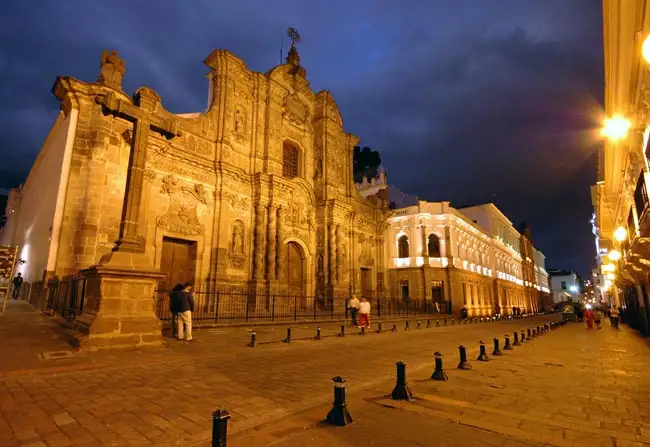
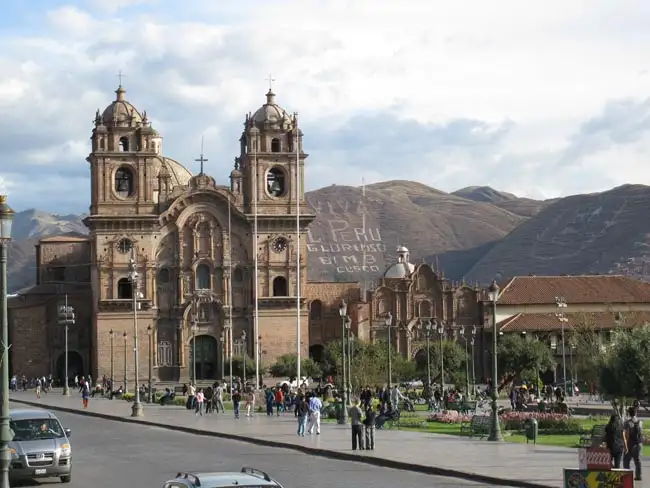
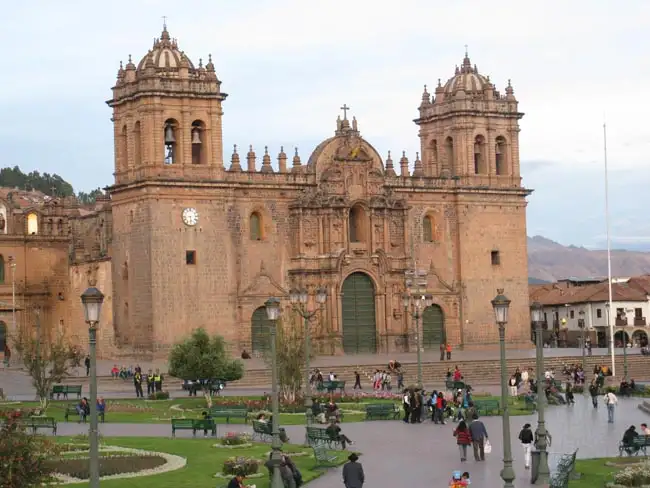
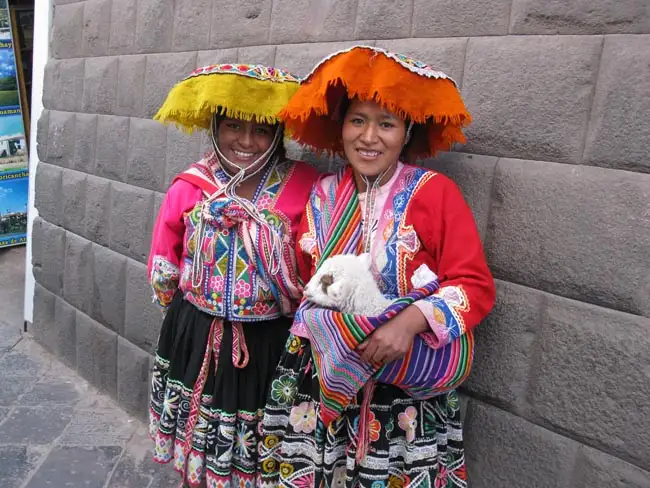
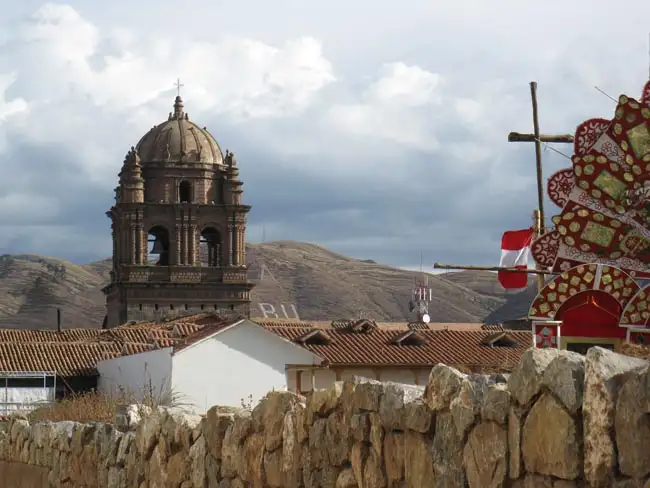
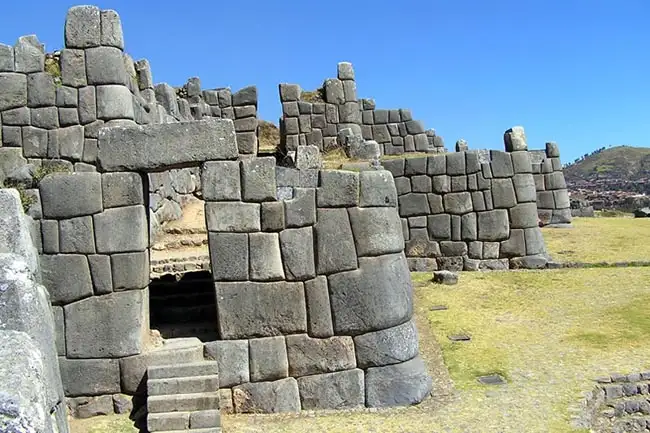
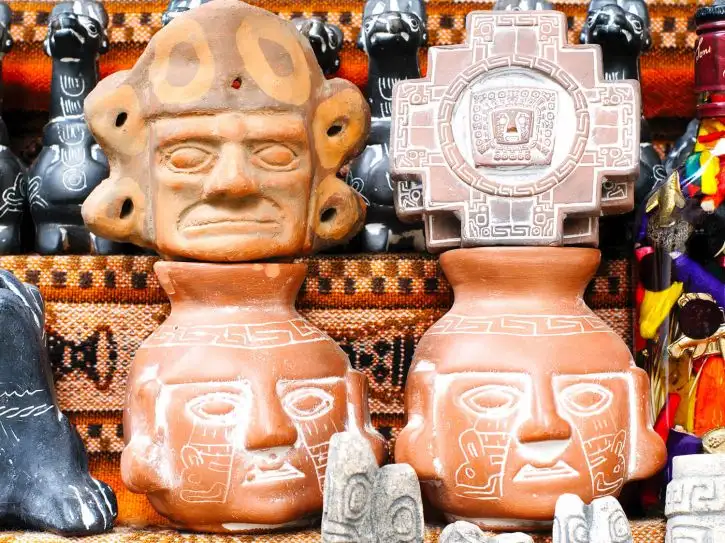
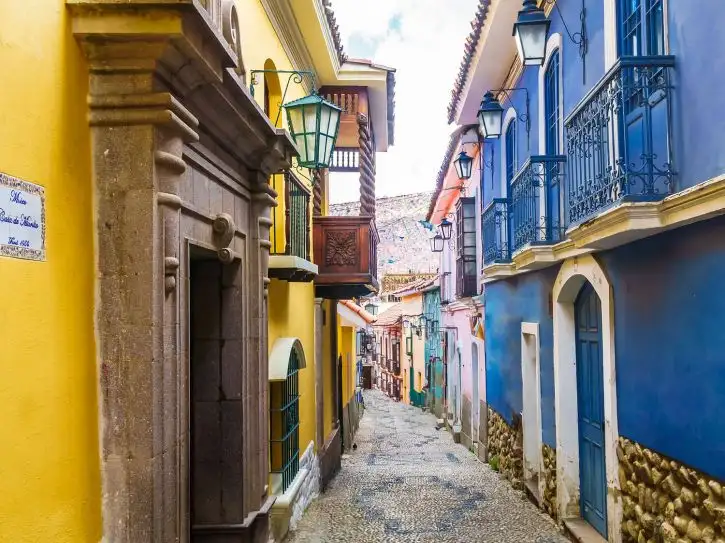
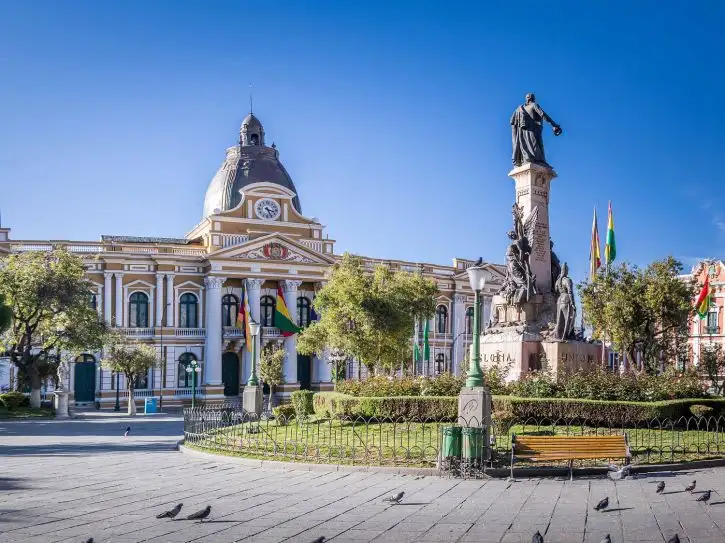
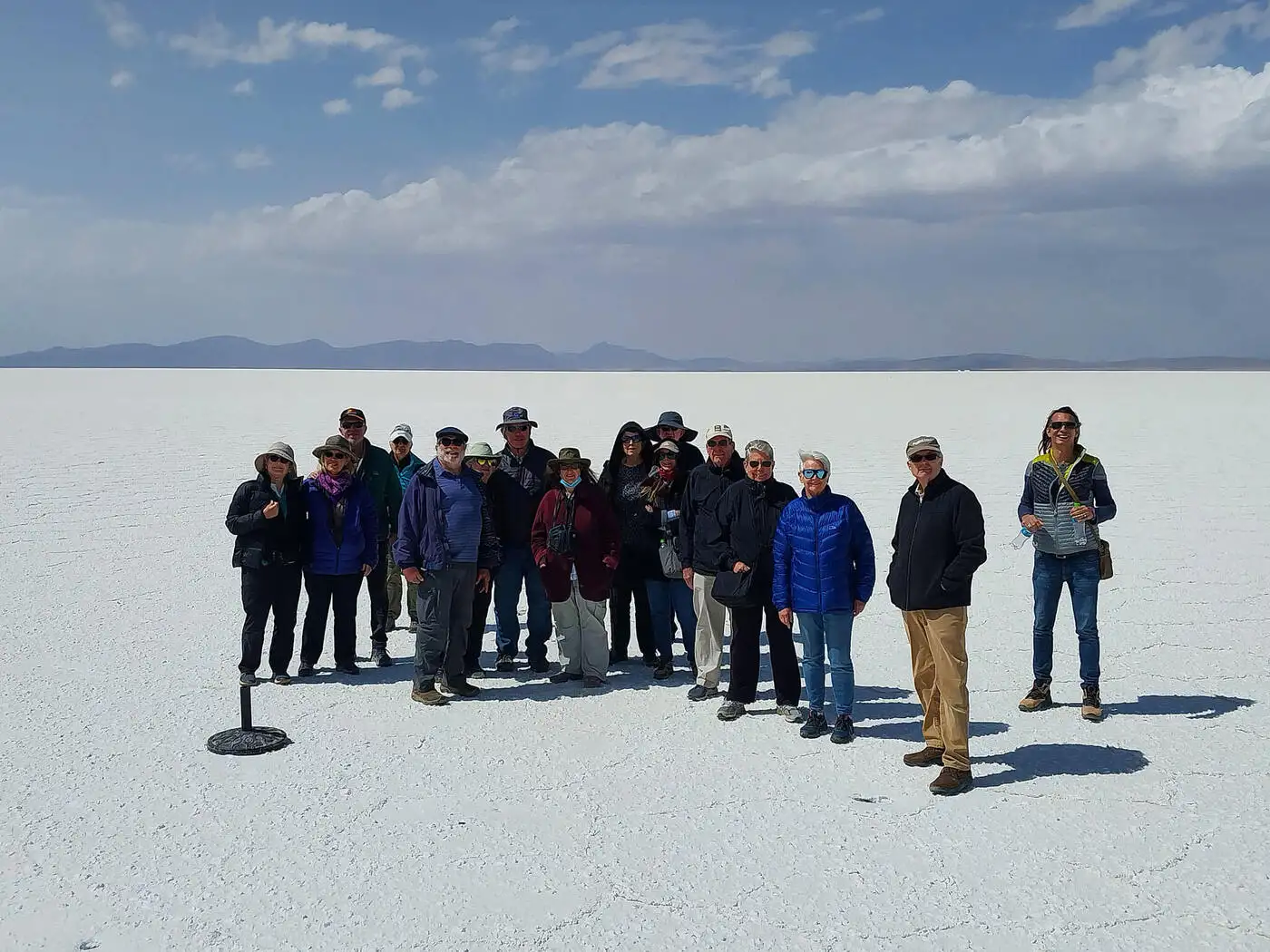
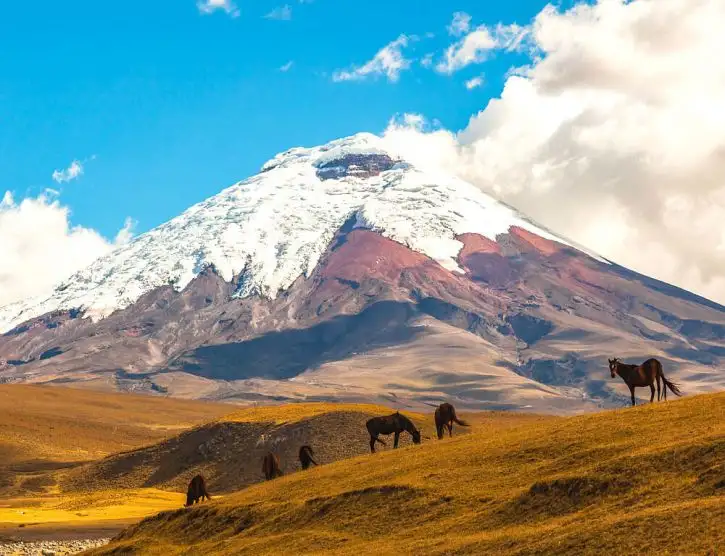
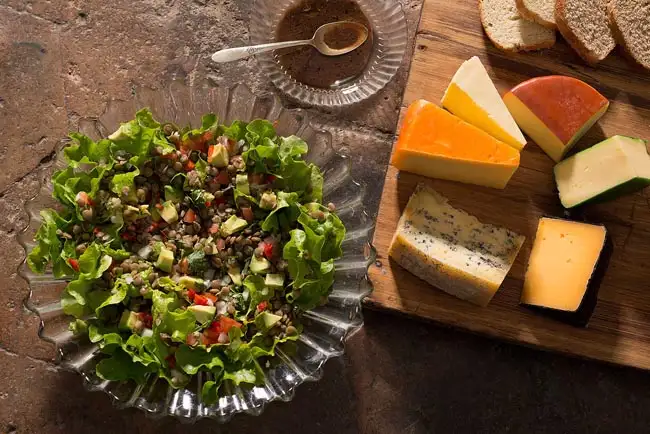
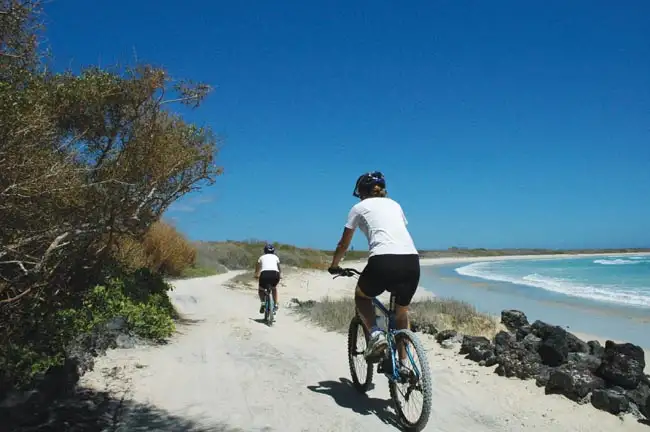
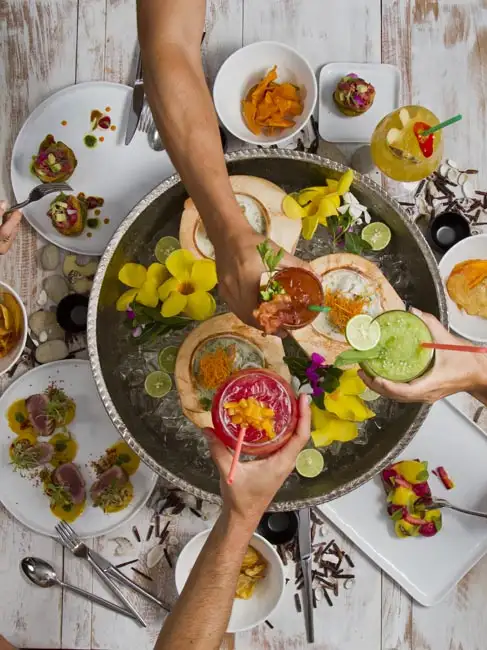
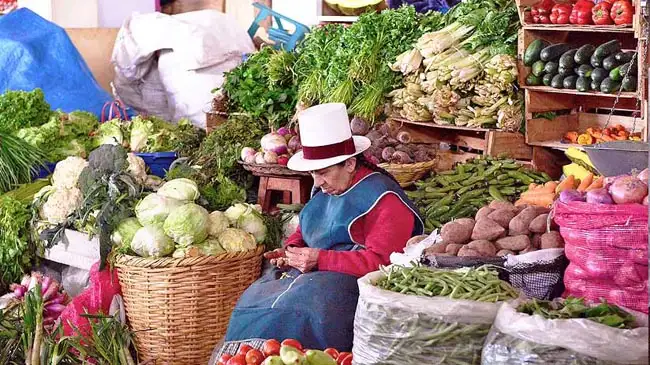
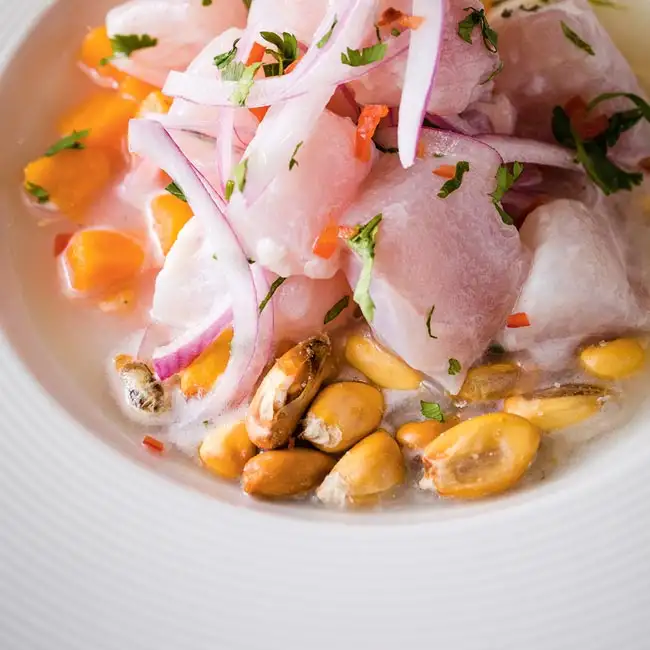



Excellent
Overall Rating
4.6
Extend Your Trip
This tour is part of a series that can be upgraded to make for a longer trip.
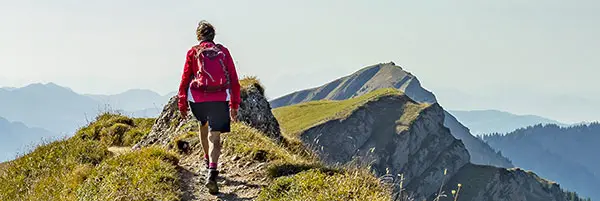
Fast and easy
Book this tour
Book your unforgettable adventure today! For any questions or advice, don't hesitate to contact us.
Have questions?
Contact Us
1-800-665-3998
- Final payment is due 90 days prior to departure.
- A non-refundable $1000 USD deposit is payable at the time of booking
- Optional Single Supplement: $2330 USD (number of singles limited).
This tour may require a mandatory single supplement charge of $2330 USD if you join our share program and we are unable to pair you. - Transferring to another tour or tour date is only permissible outside of 120 days prior to departure and is subject to a $100 USD change fee. (Read our cancellation policy for more info.)
- PLEASE NOTE: This tour requires a $1000 per person deposit due to the nature of internal flights which are instant purchase and non-refundable once issued.
Prices below are per person, twin-sharing costs in US Dollars (USD). Pricing does not include airfare to/from the tour and any applicable taxes. Get general information on flights to/from the tour.
Choose your departure date:
Frequently Asked Questions
- What is the maximum number of participants on a trip?Most of our tours carry a maximum of 18 participants; some tours (ie hiking tours) top out at 16. In the event that we do not achieve our minimum complement by our 90-day deadline, we may offer group members the option of paying a "small-group surcharge" as an alternative to cancellation. If all group members agree, we will confirm the trip at existing numbers; this surcharge is refundable in the event that we ultimately achieve our regular minimum. If the small group surcharge is not accepted, we will offer a refund of your deposit or a different trip of your choice.
- Can I extend my tour either at the beginning or end? What about stopovers?Yes, you can extend your tour either at the beginning or the end and we can book accommodation in our tour hotel. Stopovers are often permitted, depending on air routing. Stopovers usually carry a "stopover" fee levied by the airline.
- How do I make a reservation? How and when do I pay?The easiest way to make a reservation is via our website; during office hours, you are also more than welcome to contact us by telephone.
A non-refundable deposit is payable at the time of booking; if a reservation is made within 90 days, full payment is required. Some trips require a larger deposit. If international airline bookings require a non-refundable payment in order to secure space or the lowest available fare, we will require an increase in deposit equal to the cost of the ticket(s).
Early enrolment is always encouraged as group size is limited and some trips require greater preparation time.
Once we have received your deposit, we will confirm your space and send you a confirmation package containing your trip itinerary, any visa/travel permit related documents, invoice, clothing and equipment recommendations, general information on your destination(s), and forms for you to complete, sign and return to us. Your air e-tickets (if applicable), final hotel list, final trip itinerary, and instructions on how to join your tour, will be sent approximately 2-3 weeks prior to departure. - What about cancellations, refunds, and transfers?Please review our cancellation policy page for details.
- I am a single who prefers my own room. What is a single supplement?All of our tours have a single supplement for those who want to be guaranteed their own room at each location.
This supplement is a reflection of the fact that most hotels around the world do not discount the regular twin-share rate for a room by 50% for only one person occupying a room. Most hotels will give a break on the price, but usually in the range of 25-30% of the twin-share rate. This difference, multiplied by each night, amounts to the single supplement.
The conventional amount can also vary from country to country and some destinations are more expensive than others for single occupancy. In order to be "single friendly," the supplements we apply are not a profit centre for us and we do our best to keep them as reasonable as possible.
On most tours we limit the number of singles available, not to be punitive, but rather because many hotels allow for only a limited number of singles; some smaller hotels at remote locations also have a limited number of single rooms available.
Please note that most single rooms around the world are smaller than twin-share rooms and will likely have only one bed. - Do you have a shared accommodation program?Yes! If you are single traveller and are willing to share, we will do our best to pair you with a same-gender roommate. On most of our tours, if we fail to pair you, we will absorb the single supplement fee and you will default to a single room at no extra charge. At some destinations, however, where single rooms are not significantly discounted, or not at all, we may apply a "mandatory" single in the event that we cannot find you a share partner. This is usually 50% of the usual supplement, but can be as much as 100%. If applicable, this proviso will be noted on each tour page on this website, on your invoice, and in our tour date/price book (available for download under "Resources").
Please choose a departure date!
